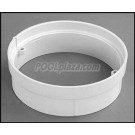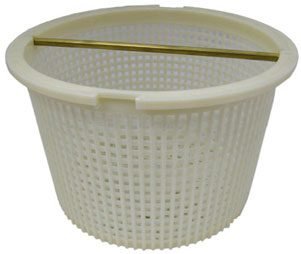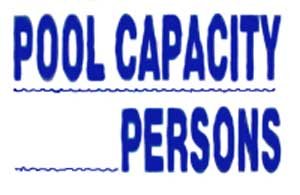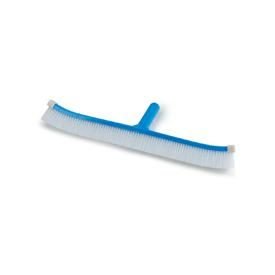Pool Pump Sizing
How to correctly size a pool pump for your swimming pool
It is important to carefully evaluate your pools needs before deciding on a replacement pump.
This is because pumps are a lot more efficient than they used to be and you run the risk of oversizing the pump if you simply go by horsepower ratings.
To assist you in your pump selection, we have included a brief synopsis of each type of pump along with a comparison chart on the bottom of the page. We have also included ratings on each pump.
Once you narrow down your selection, click on the brand to go to that brand’s page for even more product information.
How do I choose the right pump?
There is no guarantee that your pool builder sized the pump properly to begin with. In the Dallas area, for instance, the builders are notorious for putting 2 horsepower pumps on everything because the next guy does. Nobody wants to lose a sale because they sized the pump smaller.
Properly sizing the pump involves several steps as described below. If you do this, you will avoid wasting electricity and extra wear on the other equipment.

|

|

|

|
Step 1: Determine the MINIMUM FLOW RATE.
This factor calculates the minimum flow rate that must be maintained in order to circulate all the water in the pool through the filter within a certain number of hours, otherwise known as the “turnover time”.
A good turnover time for a home pool is usually 8-10 hours. A heavily used pool will need to have a shorter turnover rate. Once you know the desired turnover rate, you can determine your desired flow rate.
Use the following equation to determine the desired flow rate:
- Pool Size – number of gallons of water in the pool.
- Turnover Time – time to move entire capacity of pool through filter.
- Flow Rate – desired flow rate in gallons per minute.
| Pool Size (US Gallons) | Turnover (Hours) | Minimum Flow Rate |
|---|---|---|
| 35,000 | 8 Hours | 73 GPM |
| 35,000 | 10 Hours | 58 GPM |
| 24,000 | 8 Hours | 50 GPM |
| 24,000 | 10 Hours | 40 GPM |
| 18,000 | 8 Hours | 38 GPM |
| 18,000 | 10 Hours | 30 GPM |

The following chart is another way to help calculate the desired flow rate.
If you have a 25,000 gallon pool and want a turnover rate of 8 hours, then you will need a pump with a flow rate of 52 gallons per minute/
If you have a 35,000 gallon pool and want a turnover rate of 10 hours, you will need a pump with a flow rate of 56 gallons per minute.
For this situation, we will use a 24,000 gallon pool with a turnover time of 8 hours, giving us a MINIMUM FLOW RATE of 50 gallons/minute.
Step 2: Determine the MAXIMUM FLOW RATE.
The flow rate through any given pool system is limited by the size of the piping and the equipment. This determines the maximum flow rate through the system.
The first thing to check is the pool system plumbing. For instance, the maximum flow rate through a 1.5 inch PVC pipe is 44 Gallons per minute. Even if you have a pump that can move 100 gallons per minute, it will do very little good if the piping will only allow 44 gallons per minute through it. An oversized pump will actually strain against the piping and can be damaged in the process.

Check the PLUMBING FLOW RATE
As a general rule, the velocity of the water through the pipe should not exceed 7 feet per second. The chart below shows the maximum flow through different sizes of pipe.
Count the intake lines and you will see what the maximum flow into the pump will be.
For each 2.0 inch intake line, the maximum flow into the pump will be 73 gallons per minute (GPM).
For each 1.5 inch intake line, the maximum flow into the pump will be 42 gallons per minute (GPM).
Make sure the the lines going back to the pool will also support the same level of flow.

In the diagram to the right, the system is plumbed in 2.0 inch pipe. Since the system can be run in either spa or pool mode, you have to calculate the flow rate each way.
- Spa Mode – 73 GPM (One 2.0″ pipe)
- Pool Mode – 146 GPM (Two 2.0″ pipes)
The maximum flow is the lower of the two, which would mean a MAXIMUM PLUMBING FLOW RATE of 73 gallons per minute (GPM).
Check the FILTER FLOW RATE
Another limiting factor is the pool filter. Each filter has a maximum flow rate. If you exceed that maximum flow rate, the filter will not operate properly and can be damaged as a result.
The proper filter flow rates are as follows:
| Recommended flow rates for different sizes of SAND FILTERS | |||||
|---|---|---|---|---|---|
| Tank Diameter | 19 “ | 21 “ | 24 “ | 30 “ | 36 “ |
| Surface Area | 1.8 Sq. ft. | 2.3 Sq. ft. | 3.1 Sq. ft. | 4.9 Sq. ft. | 6.9 Sq. ft. |
| Max Flow Rate | 40 GPM | 50 GPM | 60 GPM | 100 GPM | 140 GPM |
{{block type=”ultimo/product_list_featured” template=”catalog/product/list_featured_slider.phtml” category_id=”2089″ product_count=”12″ breakpoints=”[0, 1], [320, 2], [480, 3], [768, 4], [960, 5], [1280, 6]” pagination=”1″ centered=”1″ hide_button=”1″ block_name=”SAND FILTERS”}}
| Recommended flow rates for different sizes of D.E FILTERS | |||||
|---|---|---|---|---|---|
| Surface Area | 24 Sq. ft. | 36 Sq. ft. | 48 Sq. ft. | 60 Sq. ft. | 72 Sq. ft. |
| Max Flow Rate | 48 GPM | 72 GPM | 96 GPM | 120 GPM | 144 GPM |
| Best Flow Rate | 36 GPM | 54 GPM | 72 GPM | 90 GPM | 108 GPM |
{{block type=”ultimo/product_list_featured” template=”catalog/product/list_featured_slider.phtml” category_id=”2088″ product_count=”12″ breakpoints=”[0, 1], [320, 2], [480, 3], [768, 4], [960, 5], [1280, 6]” pagination=”1″ centered=”1″ hide_button=”1″ block_name=”D.E FILTERS”}}
| Recommended flow rates for different sizes of CARTRIDGE FILTERS | |||||
|---|---|---|---|---|---|
| Surface Area | 100 Sq. ft. | 200 Sq. ft. | 300 Sq. ft. | 400 Sq. ft. | 500 Sq. ft. |
| Max Flow Rate | 38 GPM | 75 GPM | 112 GPM | 150 GPM | 150 GPM |
| Best Flow Rate | 30 GPM | 50 GPM | 75 GPM | 100 GPM | 125 GPM |
{{block type=”ultimo/product_list_featured” template=”catalog/product/list_featured_slider.phtml” category_id=”2087″ product_count=”12″ breakpoints=”[0, 1], [320, 2], [480, 3], [768, 4], [960, 5], [1280, 6]” pagination=”1″ centered=”1″ hide_button=”1″ block_name=”CARTRIDGE FILTERS”}}
In this particular system, if you have a 48 square foot DE filter (see yellow highlighted area above), your MAXIMUM FILTER FLOW RATE would be 96 gallons per minute. In a perfect world, we would try to keep the flow rate down near 72 gallons per minute, but for now we are dealing with the maximum flow rate.
- Maximum plumbing flow rate – 73 Gallons per minute.
- Maximum filter flow rate – 96 Gallons per minute.
- The overall MAXIMUM FLOW RATE is the the lesser of the two – 73 gallons per minute.
Step 3: Choose an IDEAL FLOW RATING for your new pump.
After you have calculated the MINIMUM FLOW RATING required to meet the turnover requirements of the pool, and after you have calculated the MAXIMUM FLOW RATING based on the limitations of the filter and piping, you are ready to select the proper size pump.
Draw a simple chart like the one below. Mark the MINIMUM FLOW RATING and the MAXIMUM FLOW RATING. The space between the minimum and maximum flow rate is the ideal range.
If you have a pool with no attached spa, you can choose a pump on the lower side of the ideal range. It will be sufficient to properly filter the pool without wasting energy in the process. In that case, we would look for a pump in the 50 – 60 GPM range.
If you have a pool/spa combination, you need to consider the flow requirements of the spa jets. This will often push you towards a pump on the higher end of the acceptable scale. In that case, we would look for a pump in the 75 GPM range.
If you have a pool/spa combination, you might want to consider a 2 speed pump. It can run on low speed while it filters the pool, and then switch to high speed when using the spa.

Step 4: Look at the POOL PUMP RATINGS to find the right pump

Once you have decided to buy a new pump, take some time to research your options..
Don’t just assume that you need the same horsepower pump as you now have.
The sample pump chart on the right shows the pump curves for different sized pumps.
Suppose your system has 60 feet of head and you want a pump that will deliver 50 gallons per minute.
We have added a yellow line denoting 60 ft of head, and a blue line denoting 50 GPM. Find where the two lines cross and you will see the pump that will deliver the desired rate of flow.
From this chart, you can see that a 1 horsepower pump (the green curve) will give you 52 GPM flow on a system with 64 feet of head.
We have tried to give you the flow information on each pump so that once you come up with a rate of flow, you can come up with the proper pump, the first time.
Note: Figuring out feet of head (below) is difficult. Typically a in-ground pool will have 50-60 feet of head pressure and an above ground pool will be somewhere around 30 feet of head. These are only approximations.
What about ‘FEET OF HEAD’ ? What does that mean?
The total resistance to flow is measured in “feet of head”. As you can tell from looking at the pump charts, the greater the resistance to flow (expressed in feet of head), the lower the flow rate. The greater the resistance to flow, the more powerful the pump needs to be to overcome it.

The resistance is measured in “feet of head”. The best way is to approximate the resistance is as follows:
- 1. Measure the vacuum pressure at the pump and multiply by 1.13. – A reading of 12 inches mercury times 1.13 equals 13.5 feet of head.
- 2. Measure the clean filter pressure and multiply by 2.31. – A reading of 22 times 2.31 equals 51 feet of head.
- 3. Add the two together to get total friction loss in feet of head. – A reading of 13.5 plus 51 equals roughly 64 feet of head.
































